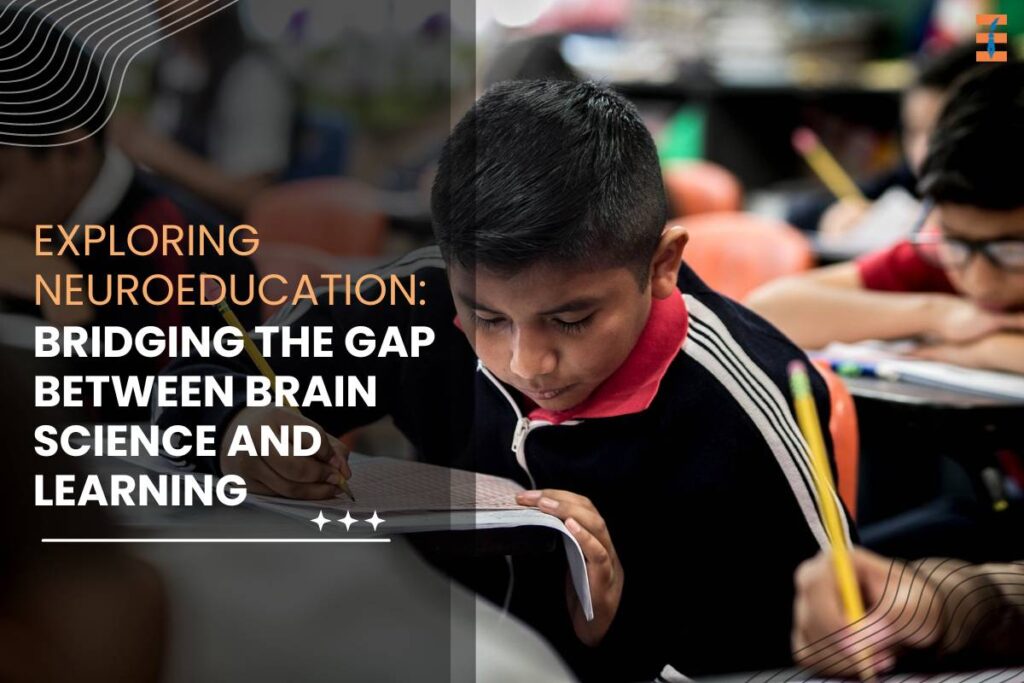In recent years, the intersection of neuroscience and education has given rise to a field known as neuroeducation. This burgeoning discipline seeks to understand how the brain learns and applies this knowledge to improve educational practices. By bridging the gap between neuroscience and pedagogy, it holds the promise of revolutionizing teaching and learning methodologies. This article delves into the foundations of neuroeducation, its key principles, and its implications for educators, students, and the future of education.
Understanding Neuroeducation
Neuroeducation, also referred to as educational neuroscience or mind, brain, and education science (MBE), is an interdisciplinary field that draws insights from neuroscience, psychology, and education. At its core, it seeks to unravel the mysteries of the brain to inform teaching practices and enhance learning outcomes. By leveraging advancements in neuroimaging techniques, cognitive psychology, and educational research, neuroeducators aim to decipher how the brain processes, retains, and applies information in educational contexts.
Key Principles of Neuroeducation:
Neuroeducation is underpinned by several key principles that guide its research and application:
1. Neuroplasticity

The brain’s remarkable ability to reorganize and adapt in response to learning experiences forms the cornerstone of this. Understanding neuroplasticity enables educators to design interventions that capitalize on the brain’s capacity for growth and change.
2. Individual Differences
Recognizing that each learner’s brain is unique, it emphasizes the importance of personalized learning approaches. By taking into account students’ cognitive profiles, preferences, and strengths, educators can tailor instruction to optimize learning outcomes.
3. Emotion and Cognition
Neuroeducation highlights the intricate interplay between emotion and cognition in the learning process. Emotionally engaging experiences not only enhance motivation but also facilitate deeper learning and memory consolidation.
4. Metacognition
Metacognitive skills, including self-awareness, self-regulation, and reflection, play a crucial role in effective learning. It encourages the development of metacognitive strategies to empower students to monitor and control their learning processes.
5. Multimodal Learning

Leveraging multiple sensory modalities, such as visual, auditory, and kinesthetic channels, enhances learning retention and comprehension. Neuroeducation promotes the integration of diverse instructional strategies to accommodate various learning styles and preferences.
Implications for Education:
The integration of neuroscientific principles into education has profound implications for teaching practices, curriculum design, and educational policy:
1. Evidence-Based Instruction
Neuroeducation advocates for evidence-based instructional strategies grounded in empirical research on brain function and learning. Educators can leverage insights from neuroscience to design interventions that are not only effective but also supported by scientific evidence.
2. Adaptive Learning Technologies
Advances in technology, such as adaptive learning systems and educational neuroscience software, offer personalized learning experiences tailored to individual students’ needs and abilities. By harnessing data analytics and cognitive modeling, these tools optimize learning trajectories and foster student engagement.
3. Mindful Teaching Practices
Neuroeducation promotes mindfulness in teaching, encouraging educators to cultivate awareness of students’ cognitive and emotional states. By fostering positive teacher-student relationships and creating a supportive learning environment, educators can promote optimal brain functioning and academic success.
4. Brain-Compatible Curriculum

Designing curriculum and instructional materials that align with the brain’s natural learning processes enhances knowledge acquisition and retention. It emphasizes the importance of active learning, inquiry-based approaches, and real-world relevance in curriculum design.
5. Professional Development
Integrating neuroscientific principles into teacher training programs and professional development initiatives equips educators with the knowledge and skills to apply evidence-based practices in the classroom. By staying abreast of the latest research findings in educational neuroscience, educators can continuously refine their instructional techniques to meet the diverse needs of their students.
Challenges and Future Directions
While neuroeducation holds tremendous promise for enhancing educational practices, it also faces several challenges and ethical considerations. Privacy concerns related to the collection and analysis of neuroimaging data, the need for interdisciplinary collaboration, and the translation of it findings into actionable pedagogical strategies are among the key challenges facing the field.
Looking ahead, the future of neuroeducation lies in interdisciplinary collaboration, innovative research methodologies, and ethical considerations. By fostering dialogue between neuroscientists, educators, policymakers, and other stakeholders, it can continue to evolve and make meaningful contributions to the field of education.
Conclusion
Neuroeducation represents a paradigm shift in how we understand and approach teaching and learning. By bridging the gap between brain science and education, it offers insights into the neural mechanisms underlying learning and informs evidence-based instructional practices. As we continue to unravel the mysteries of the brain, neuroeducation holds the potential to revolutionize education and empower learners to reach their full potential.
Also Read: Unlocking Productivity and Well-being: The Power of Brain Breaks










